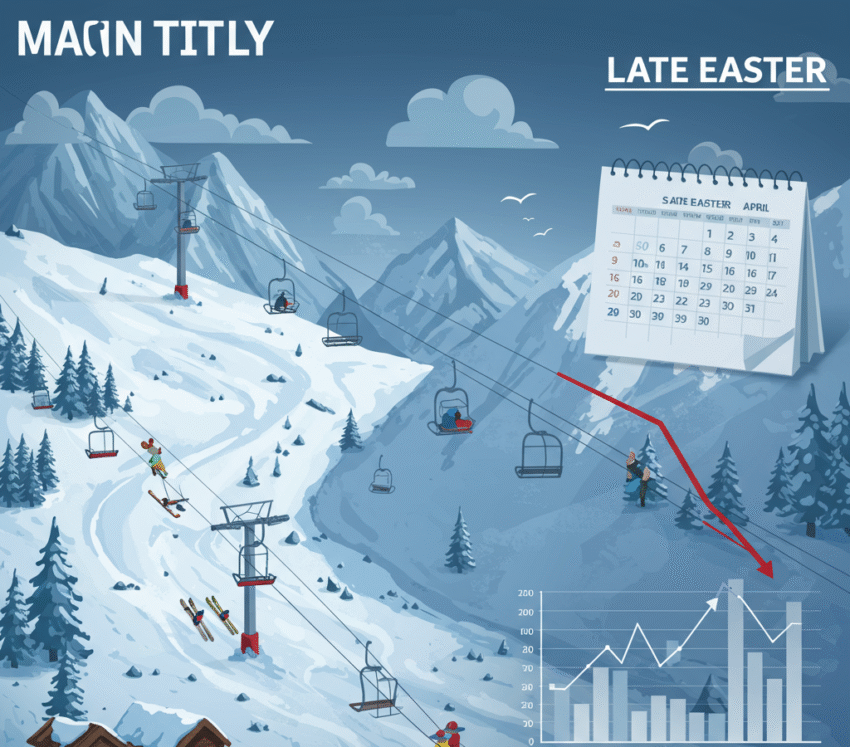Why SkiStar’s Revenue Dropped, But Profit Still Climbed: A Clear Look at the Numbers
Ever wonder how businesses tied closely to weather and holidays manage to stay afloat, even in unpredictable seasons? SkiStar, Scandinavia’s top ski resort operator, just gave us a perfect case study. Their recent financial results tell a fascinating story—one where warm weather and awkward Easter timing hurt sales, yet profits still managed to tick upwards.
Let’s break down what happened, what it means, and why it’s worth paying attention to if you’re interested in tourism trends, seasonal businesses, or investing in travel-related companies.
Warm Weather & Late Easter Hit Winter Tourism
If you’ve been skiing in Scandinavia—or planned a trip—you know that timing and snow conditions are everything. This year, SkiStar faced two major challenges:
- A warm winter made skiing less attractive and reduced the season’s length.
- Easter, which normally brings a tourism boost, was celebrated in Q4 instead of Q3 this year.
This combination led to fewer bookings and lower visitor numbers in the March–May quarter, which is a prime season for many Northern European ski resorts. Not surprisingly, that translated into a notable drop in revenue for SkiStar’s third quarter.
Q3: The Numbers You Should Know
Here’s a simple look at SkiStar’s performance in Q3 (March–May 2024):
| Financial Metric | Q3 2024 | Q3 2023 | Change |
|---|---|---|---|
| Revenue | SEK 1.43 billion | SEK 1.52 billion | -6.2% |
| Operating Profit | SEK 737 million | SEK 826 million | -10.8% |
| Profit Before Tax | SEK 715 million | SEK 802 million | -10.8% |
At first glance, things look rough. Declines across revenue and profit margins suggest a struggling quarter. But hold tight—there’s more to the story.
How SkiStar Turned Things Around Over Nine Months
Now for the twist—you might expect the whole financial year to be down based on that rough quarter. But here’s where SkiStar surprised many investors.
Nine-Month Financial Highlights
From September 2023 to May 2024, SkiStar actually posted significant profit growth—even if revenue didn’t take the same leap:
| Metric | 9M 2024 | 9M 2023 | Change |
|---|---|---|---|
| Revenue | SEK 2.98 billion | SEK 2.96 billion | +0.6% |
| Profit (EBT) | SEK 702 million | SEK 581 million | +21% |
That’s a 21% boost in profit over nine months—even though total revenue barely changed. So, what’s behind the numbers?
Better Cost Control and Diversified Income Helped
SkiStar didn’t just rely on winter tourism money this year. Instead, they focused on:
- Cost efficiency: They tightened their operations, which helped cushions falls in income with better-managed spending.
- Year-round offerings: SkiStar is making a big push to become more than a ski destination. They’re developing summer tourism options, like hiking and wellness retreats, to keep income rolling in beyond the winter months.
This long-term strategy is starting to pay off. In fact, CEO Stefan Sjöstrand highlighted strong demand for year-round tourism in the mountains—a trend that could help smooth out the dips from unpredictable winters in the future.
The Bigger Picture: Skiing & Sustainability
So, what does all of this mean for you—as an investor, traveler, or just someone curious about business?
It tells us that seasonal businesses like SkiStar need to adapt fast. Climate change is transforming winter sports tourism. Less snow, shorter seasons, and shifting holidays make it harder to depend solely on ski season revenue.
SkiStar is tackling this shift in two ways:
- Expanding non-winter offers – Think hiking, biking, and wellness escapes.
- Investing in sustainability – They’re introducing green initiatives and even expanding electric car chargers at resorts to align with eco-conscious travelers.
What Travelers Can Expect From SkiStar
If you’re planning a trip to Sweden, Norway, or Austria and are considering SkiStar resorts, here are a few things you might notice:
- More flexible packages for summer and off-season trips
- Better amenities for families and non-skiers
- A push toward eco-friendly travel experiences
SkiStar is clearly thinking beyond skis and snowboards, which could make the resort experience richer and more inclusive for all types of travelers.
Will Investors Keep Their Cool?
From an investment point of view, SkiStar’s long-game strategy is noteworthy. Yes, the short-term weather challenges stung. But the company’s ability to stay profitable—even when key conditions weren’t in their favor—shows strong leadership and adaptability.
Markets weren’t shocked by the earnings dip, likely because investors know these seasonal fluctuations are part of the game. However, continued investment in alternative revenue streams may keep SkiStar steady for the long haul.
In Conclusion: Adaptability Is the Real Superpower
SkiStar’s latest financial report is a great reminder that in business, flexibility beats predictability. You can’t control the weather or the calendar, but you can control how you react.
With a smart pivot toward year-round tourism and a focus on cost control, SkiStar is showing the world how a snow business doesn’t have to melt when the sun comes out.
Final Thoughts
Do you think more ski resorts should follow SkiStar’s path and branch out into summer tourism? Or is the snow-based charm too important to diversify? Let’s talk in the comments!
And whether you’re planning your next mountain getaway or just keeping an eye on tourism stocks, always keep an open mind—because in today’s world, agility is just as important as having snow on the slopes.
Keywords used: ski tourism, SkiStar earnings, SkiStar Q3 2024, seasonal business challenges, travel industry trends, summer tourism, Scandinavian travel, sustainability in tourism, resort profitability
